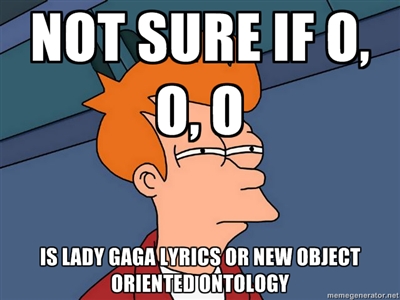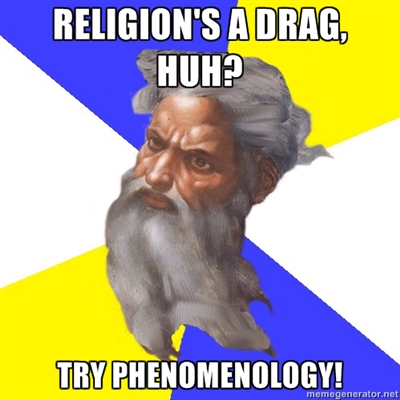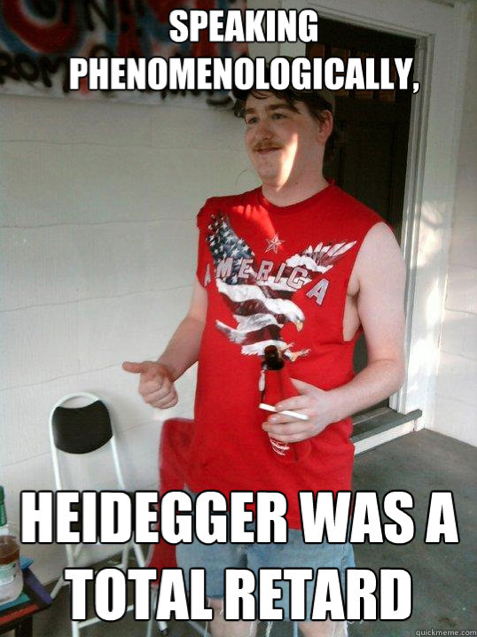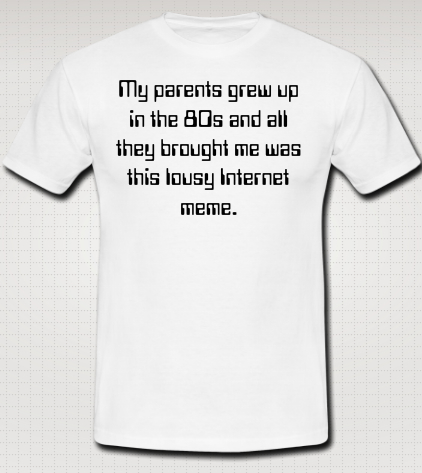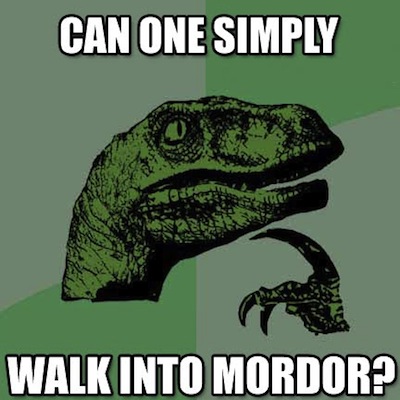Oh look: a Derrida meme that self-reflexively theorizes the serial workings of the meme!
Tag: Internet memes
Object-Oriented Gaga, the Meme
À propos of my “Object-Oriented Gaga” talk/video (or not…): I ran across the above image while doing some follow-up research on the topic. Filed under: “weird stuff.”
Phenomenology Memes
On this blog, I have occasionally written about memes — for example, in relation to seriality and Niklas Luhmann’s theory of media or superheroes and the politics and media practices of #Occupy (here and here). I also looked at the “Pepper Spraying Cop” meme and suggested, in a post called “Photoshop and the Phenomenology of Violence,” that the meme can serve as a unique vehicle for phenomenological insight, due in part to the pattern of experimental variation that structures the practices of phenomenological inquiry and of meme production alike. It never crossed my mind, though, that there might be something like a “phenomenology meme” — not, that is, until search engines started directing people to this blog when they searched for that unusual phrase (due, of course, to the equally unusual combination of topics discussed on this blog). In any case, not wanting to disappoint those readers and their desire for intellectually stimulating images, I went out and found a few specimens of said phenomenology memes, which I reproduce here for the purposes of scholarly interest and aesthetic appreciation.
Reterritorialization
Meanwhile, in Hannover…
An interview with me on the subject of memes, conducted by Manuel Behrens, appears in today’s Hannoversche Allgemeine Zeitung as part of a full-page spread on Boromir, Philosoraptor, Admiral Ackbar, and Rage Comics. True story! Check it out here: Was sind eigentlich Memes? (The interview, “Jeder kann mitmachen,” is at the bottom of the page.)
Niklas Luhmann’s Theory of Memes
Over at her blog Judgmental Observer, Amanda Ann Klein has a great post up about Internet memes, their workings, and their humor. In addition to the central themes of “cruelty” and “self-loathing” that she sees at work, Klein points to two formal aspects of successful memes: “recognizability” and “repetition.”
This reminded me of Niklas Luhmann’s theory of media, itself a sort of “remediation” of psychologist Fritz Heider’s distinction of medium vs. thing, which comes down to a distinction between a “loose coupling” and a “tight coupling” of elements of a given sort (see Heider’s Ding und Medium). For Luhmann, mediality consists in the relation between a loosely coupled “medial substrate” and the tightly coupled “forms” that it is capable of assuming — or, in other words, in the “operative deployment of the difference of medial substrate and form” (Luhmann, Die Gesellschaft der Gesellschaft 195; my translation), which is itself relative to an observer or system.
(For more on Luhmann’s theory of media, see Chapter 3 (165-214) of Luhmann, Die Kunst der Gesellschaft (translated as Art as a Social System). See also Chapter 2 (190-412) of Luhmann, Die Gesellschaft der Gesellschaft.)
The connection with Klein’s notions of “recognizability” and “repetition” as formal elements of memification comes when Luhmann, on one occasion, notes that one way to elaborate his distinction of medial substrate and form is “by means of the distinction between redundancy and variety” (Art as a Social System 105). He explains:
The elements that form the medium through their loose coupling—such as letters in a certain kind of writing or words in a text—must be easily recognizable. They carry little information themselves, since the informational content of an artwork must be generated in the course of its formation. The formation of the work creates surprise and assures variety, because there are many ways in which the work can take shape and because, when observed slowly, the work invites the viewer to contemplate alternate possibilities and to experiment with formal variations. (105)
“Variety through repetition” is the formal basis of the Internet meme, as well as being a principle of seriality and a formal description of mediality itself (following Luhmann). As I recently argued for Lady Gaga, Nyan Cat can also be dubbed a “serial media remix”: Nyan Cat is the instantly recognizable, iconically redundant substrate out of which ever new forms are produced; these forms become available, in turn, for sampling, and they serve as the substrate of a higher-order mediality, thus proliferating in a (non-linear) serial explosion.
Long live Nyan Cat: memifier of Internets, proliferator of serial forms, and media remixer extraordinaire! All your substrate are belong to us!!!11!

